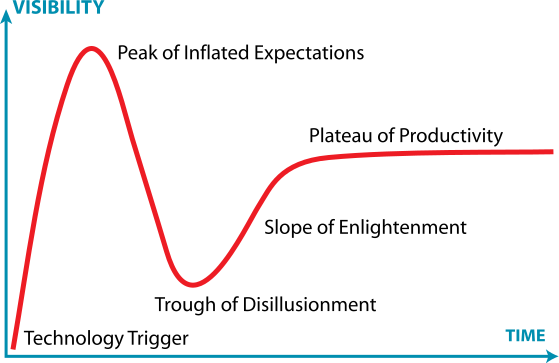Getting started with RPA is comparatively quick and easy. There is minimal disruption to your current environment. So, you can dive right in and find out if RPA helps your organization. Dive right in but do some prep work so that you can get all the benefits and can scale in future.
If you are new to RPA, read the beginners guide here.
If you have heard and understood about RPA, you are probably thinking how can I get started with RPA quickly? You may want to explore for yourself or like to take up an initiative in your organization.
The good news is that RPA is not a complicated technology or skill. RPA is comparatively easy to get started with. That is true whether you are evaluating RPA for yourself or your organization.
As an individual, there are many free learning resources and tools available online. I have provided a few resources to get started in the complete beginners guide to RPA. If you are looking for free or open source tools for RPA, the resources are here. Heck, there is even a guide to get started in 15 minutes! May take you a bit longer but it walks you through a step by step process with UiPath.
This post addresses how to get started with RPA in your organization. If you are driving this initiative, you may want to start with some groundwork.
Is RPA right for your Organization?
RPA is a technology that emulates the tasks humans perform using computers. It automates manual, rules-based, and repetitive activities. So, if your organization have a lot of manual work in certain areas, there may be opportunities to automate with RPA.
RPA is quick to implement at relatively low costs. It is also applied in a way there is minimal disruption to an existing technology. So, you can dive right in a find out if RPA helps. Many organizations start small and understand if RPA brings value to the organization before scaling.
Start with a workshop
Many vendors are eager to get a Pilot started. A better approach is to understand RPA and analyze usefulness to your organization before you Pilot. Dive right in but do some prep work so that you know what you are getting into. Position yourself to scale the automation program if this is indeed the technology that does wonders for you.
The best way to understand RPA better would be to have an RPA workshop with people who have implemented RPA before. This may be people from your industry who have done this before, RPA consultants or service providers. It would be better to remain tool and vendor neutral as you start out. Some providers and some consultants offer these initial consultations free of cost.
Have a well planned workshop. I would suggest having a Design thinking approach to the workshop. Come to the session with your problems especially the manually intensive process. Usually the person running the workshop would share a questionnaire so that you can be prepared for the session.
In the workshop, understand RPA better through demos from the past. Once people see how RPA works, they have multiple ideas. List all the ideas that come up – do not hold back.
Now along with an RPA consultant or provider, look for processes that are most amenable to RPA. Some of the pointers for processes that are automated best:
- Labor intensive: Highly manual and repetitive processes
- Standardized and Structured: Well defined processes, preferably with documentation
- Functioning and Stable: Processes that are not changing in the next few months
By the end of the workshop, you should have some sense of what RPA is and a list of possible processes to be automated.
Determine Potential and Readiness
Now that you have some ideas to automate, analyze if there is enough opportunity to automate in your organization. This can be done offline after the workshop. Some of the things to analyze for:
- Benefits & Savings: Look at all benefits (cost, speed, compliance etc.) and the ROI considering the costs and savings.
- Organization readiness– How ready is the organization to change? Are the stakeholders aligned? Are there any major projects coming up that could change the environment and/or the applications?
- Automation potential– You like to have enough manual processes that can be automated with the available technology.
The analysis should help you decide if RPA right for you now. If you see good potential and readiness in your organization, it’s time to take the next step.
Prepare for Pilot
As a next step, we would like to do a quick automation with RPA- a pilot. The idea of a pilot is to prove to the organization that real savings are possible.
Before you do the pilot, it is important to set up the right foundations so that you can scale and realize the complete potential of automation. Many organizations do not go past the pilot use case as they did not analyze or lay the right foundations before they started out.
The first step is to further whittle down the list of processes and identify the use case(s) you like to focus on for the Pilot.
Use case selection
For the Pilot, you would like to identify one or a couple of processes that are not complicated and provides proof that the technology, and approach you are taking is providing real value to the organization. Some of the pointers to select the Pilot use case include:
- A low number of exception paths
- Not much audit involvement
- Not very critical for the organization
- Provides good cost savings and benefits
- Visible in the organization so that that people take note of the results
Tool selection
Once the Use case is selected, select a tool for the selected Pilot process. Walk through the processes that you have so far and ensure the tool addresses most of the use cases identified by your team so far. That should help choose a tool that is also good for the long run.
Choose tools that have low barrier of entry. There are tools that want you to get locked down in their ecosystem by charging high upfront fees. Even if people are ready to do the pilot for free, look for the longer term costs and benefits.
Also look for the level of expertise that would be required. Are you gong to use business people to configure or tech or combination? Choose tools that your people can configure.
Governance
RPA is digital labor – a new form of talent for the organization. Treat it as such with the new capability / talent being under the management of business. All the stakeholders support the business in bringing this capability on board.
Having said that, It is important to identify the key stakeholders and involve them early. Even though it’s a pilot, it would need all key players like Business, IT, Procurement to be aligned. Everyone’s role in the pilot and beyond if the organization chooses to proceed further should be clear.
Success Criteria
As with any project, it is prudent to have well defined success criteria for the Pilot. You may want to have an agreement with the business and IT stakeholders on the metrics and how it would be measured. Measure the baseline performance metrics and have a targeted metric after the automaton.
After this groundwork phase, you should have a list of processes to Pilot, a suggested tool for the shortlisted use cases and the initial foundation to scale.
Pilot Implementation
Once we have done the groundwork, it is time to implement the pilot. It is always best to follow Agile development for RPA. With the agile model, you can measure impact for each incremental development or even enhancement in future.
Even as you do the pilot, lay the foundations for future by following a systematic methodology. The steps usually followed include:
Process discovery: This is opportunity for implementation team to study the process in depth and ensure they is in alignment with the Business team.
Design: Insist that the team design and incorporate best practices. These can be the initial standards that you want all the automations in your organization to follow.
Develop & test: This is standard workflow creation and configuration followed by testing as per the Agile methodology. Some complex developments may need coding as well.
User testing: The developed automation is tested with the user and the feedback incorporated. It is useful to give users early look in as the team iterates to reduce rework.
All these steps can usually be completed within 2 to 4 weeks of time depending on the complexity of the use case. As any project be ready for surprises and delays.
Next Steps
Once the Pilot is complete, it is time to take stock and evaluate.
Did the Pilot hit the savings goals and benefits that was anticipated? What was the real savings and benefits for the organization?
How did the Pilot go in terms of implementation? What were the learnings and what changes do you need to make for the next implementation?
How did the organization receive the new capability and changes? How can you tailor the Change management program if you are looking to scale?
Make a report on the achievements and learnings from the Pilot. Get with the teams and understand your next steps.
Need help evaluating RPA? Get in touch.



